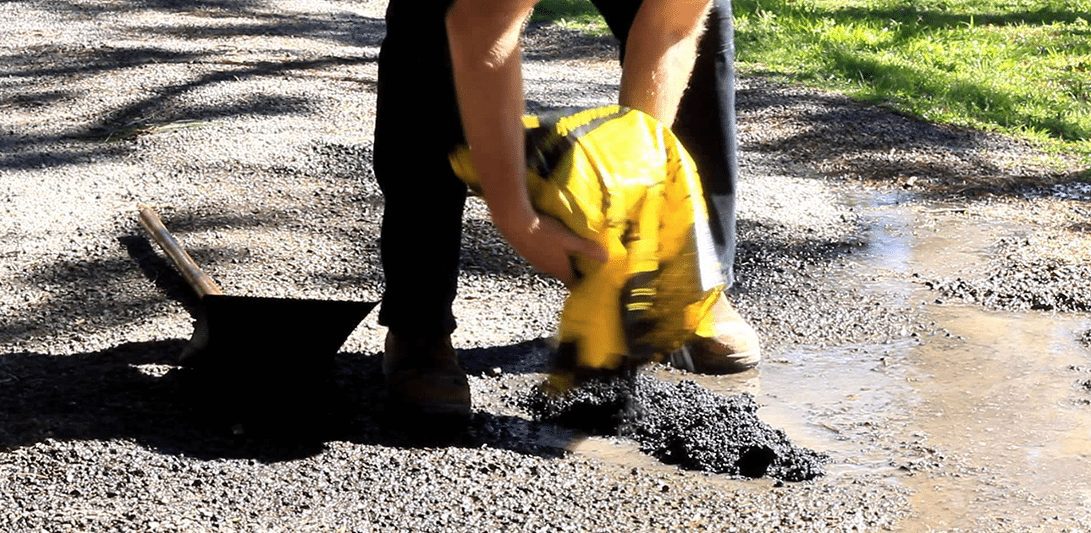Cold mix asphalt vs hot mix asphalt
When it comes to asphalt repairs, choosing the right mixture is crucial for achieving long-lasting and reliable results. Two commonly used options are cold mix asphalt and hot mix asphalt. At Road Solutions AUS, we understand the importance of selecting the appropriate material for each repair project. In this article, we will compare cold mix asphalt and hot mix asphalt, exploring their differences, advantages, and applications to help you make an informed decision.
Cold Mix Asphalt
Cold mix asphalt, also known as cold patch asphalt, is a mixture of asphalt emulsion, aggregates, and additives that can be applied and used at ambient temperatures. Unlike hot mix asphalt, it does not require heating during production or application. Cold mix asphalt is often available in pre-packaged forms like Asphalt in a Bag or Asphalt in a Bucket, making it convenient for small repairs.
Advantages of Cold Mix Asphalt:
- Versatility: Cold mix asphalt can be used for repairs in various weather conditions, including colder temperatures. It remains workable at ambient temperatures, making it suitable for year-round application.
- Convenience: Cold mix asphalt is ready to use and requires minimal preparation. It can be applied directly from the container, eliminating the need for specialized equipment or heating processes.
- Cost-Effectiveness: Cold mix asphalt repairs typically have lower production costs compared to hot mix asphalt. The absence of heating equipment and energy-intensive processes reduces overall expenses.
- Immediate Use: Cold mix asphalt repairs can be opened to traffic immediately after application, as they cure naturally over time.
Hot Mix Asphalt
Hot mix asphalt is produced at high temperatures (around 150-170°C) in an asphalt plant, where the aggregates are heated and combined with asphalt cement. The resulting mixture is transported to the repair site and applied while still hot.
Advantages of Hot Mix Asphalt:
- Durability: Hot mix asphalt offers excellent durability and can withstand heavy traffic loads and extreme weather conditions. It provides a smooth and long-lasting surface.
- Smooth Finish: Hot mix asphalt provides a smoother finish due to the high temperatures during production and compaction, resulting in better aesthetics.
- Structural Strength: Hot mix asphalt has superior structural strength, making it ideal for high-traffic areas, highways, and heavily loaded pavements.
- Customisable Mix Designs: Hot mix asphalt allows for greater control over the mix design, enabling customization to meet specific project requirements.
Choosing the Right Option
The choice between cold mix asphalt and hot mix asphalt depends on various factors, including the nature and scale of the repair project, weather conditions, and budget constraints.
Cold mix asphalt is well-suited for small repairs, such as potholes, cracks, and minor surface damage. Its versatility and convenience make it an excellent choice for emergency repairs and year-round applications. It is cost-effective and convenient for quick fixes.
Hot mix asphalt is ideal for larger projects, such as resurfacing entire roads, highways, or parking lots. It provides superior durability, structural strength, and a smoother finish. Hot mix asphalt is commonly used in areas with heavy traffic and where a higher level of performance is required.
Road Solutions AUS: Your Asphalt Repair Experts
At Road Solutions AUS, we specialize in both cold mix asphalt and hot mix asphalt repairs. Our experienced team will assess your project requirements and recommend the most suitable option based on factors such as the extent of damage, location, and desired outcome.
Whether it’s cold mix asphalt in a bag for a quick patch or hot mix asphalt for major resurfacing projects, we have the expertise and products like Asphalt in a Bag and Asphalt in a Bucket to deliver reliable and high-quality repairs. Contact us today to discuss your asphalt repair needs and let our specialists



